Here at Metova, we aim to teach the people we hire to find autonomy, mastery, and purpose. We have found one of the most important abilities to obtain this is problem solving. Critically thinking and evaluating your situation is useful in all areas of your life. At work, it helps us stay highly aligned and loosely coupled, another factor in our culture. Finding the constraint and working out how to alleviate it using the the tools we will discuss aids in communication and gives context to purpose. Dave Lane, CTO has been teaching classes for Metovians using a manual he wrote. Over the next few weeks, we will be sharing this so that you too can learn to use the Theory of Constraints and work on your autonomy, mastery, and purpose.
The Goal
The goal of these blogs is to enable you to identify and alleviate constraints. That is, you will learn to find and fix problems using the Theory of Constraints (ToC). A constraint is any limitation or restriction that prevents you from achieving your goal. Constraints arise due to unexamined assumptions about the system you are attempting to improve. It is only by breaking these assumptions that you can eliminate your constraint and improve the system.
Alleviating a constraint results in increased throughput in the system. Throughput is the rate at which the system attains a goal. Examples of an increase in throughput include more product being built, more inventory being shipped, more sales being made, and more agile user stories being implemented.
While manufacturing examples are commonly used in describing the Theory of Constraints, it is important to note that there is nothing in ToC that applies specifically to manufacturing. In fact, nothing in ToC applies specifically to business. You can apply the tools you learn to tackle any problem, be it personal or professional.
The Key Assumption of Theory of Constraints
Organizations can be measured and controlled by variations on three measures: throughput, operational expense, and inventory. Before the goal of the system can be reached, necessary conditions must be met. These necessary conditions can be realized by making decisions which impact throughput, operational expense, and inventory.
The Key Objectives of Theory of Constraints
There are three questions that ToC tools empower you to answer for any constraint:
1. What to change?
2. What to change to?
3. How to change?
Through the use of tools such as the Current Reality Tree, Future Reality Tree, and Transition Tree, you will answer these questions and outline a path forward to alleviating your constraint.
ToC tools help you answer 1.What to change 2. What to change to 3. How? [Source: @Metova] (Click to Tweet!)
The Five Focusing Steps
ToC assumes that the throughput of any goal-oriented system is limited by at least one constraint. For example, an assembly line is only as fast as its slowest worker. The five focusing steps describe how to overcome constraints to achieve more of the goal. This is sometimes referred to as the process of on-going improvement (POOGI).
1. Identify the constraint: identify the core problem preventing you from reaching your goal
2. Exploit the constraint: maximize your utilization of the constraint
3. Subordinate everything else to the constraint: align non-constraints so that the constraint is fully utilized
4. Elevate the constraint: expand the system by investing in additional resources (people, machines, materials)
5. Prevent inertia from becoming the constraint: once this constraint is elevated, a new constraint will become your bottleneck
There is Always a Constraint
As soon as you solve a constraint, you can expect another constraint to appear. As you maximize the efficiency of one part of the system, the bottleneck will move to the now-lowest-throughput part of the system. However, the system as a whole will benefit from these moving constraints: with each resolution, you increase throughput.
There is always a #constraint that can be resolved using #ToC. [Source: @Metova] (Click to Tweet!)
Vocabulary
Using consistent vocabulary when identifying, describing, and solving problems will enable us to speak more concisely and with more purpose. This is a discipline to trigger our thinking of problems in terms of the Theory of Constraints.
- Assumption: a thing that is accepted to be true or certain to happen, without proof.
- Constraint: a limitation or restriction that prevents one from attaining more of a goal.
- Goal: an aim or desired result (commonly, a company’s goal is to make money).
- Injection: a new cause (i.e., an action, policy, or behavior) which produces some desired outcome in a Future Reality Tree.
- Intermediate Objective: an actionable solution to a raised obstacle.
- Inventory: the resources that the system has invested in order to attain the goal (e.g., money invested in purchasing things that can be sold).
- Obstacle: a thing that prevents an injection from being performed in a Prerequisite Tree.
- Operational Expense: the money the system spends in order to turn inventory into throughput.
- Root Cause: an initiating cause of a causal change which leads to an outcome or effect of interest. (e.g., the deepest underlying problem preventing attainment of the goal).
- Side Effect: a secondary, typically undesirable effect.
- System: the people, processes, and tools which define the problem domain. For example, a company is a system which operates to attain a goal.
- Throughput: the rate at which the system attains the goal.
- Undesirable Effect: a symptom of a problem.
Further Reading
- Focused Perfomance
- Theory of Constraints- Wikipedia
- A Guide to Implementing the Theory of Constraints
- Thinking Processes- Wikipedia
- 5 Focusing Steps
- 5 Whys – Wikipedia
- Root Cause – Wikipedia
- Root Cause Analysis – Wikipedia
- Correlation Does Not Imply Causation – Wikipedia
- Tracing A Problem to its Origins
- Throughput- Wikipedia
Is Development Your Constraint?
